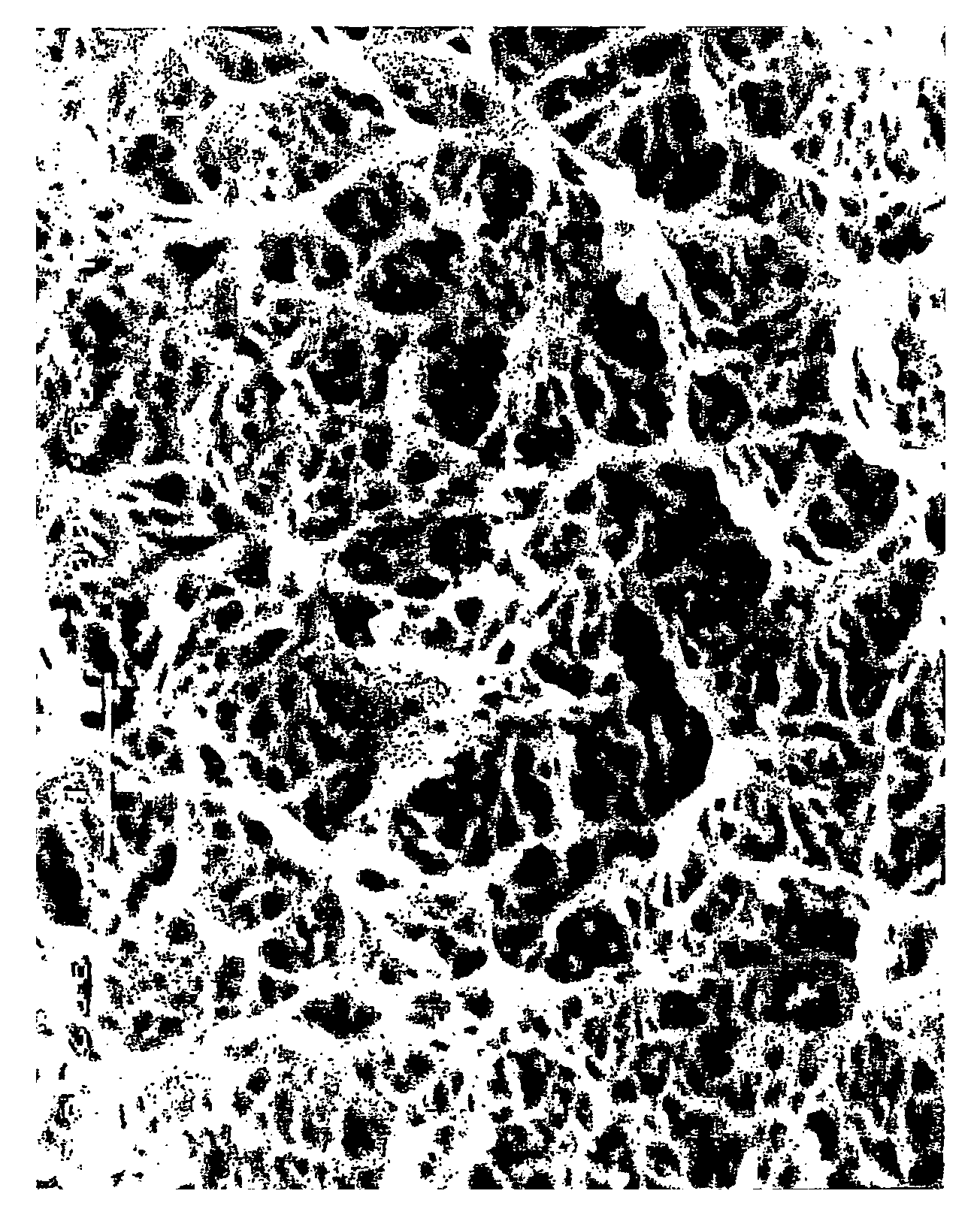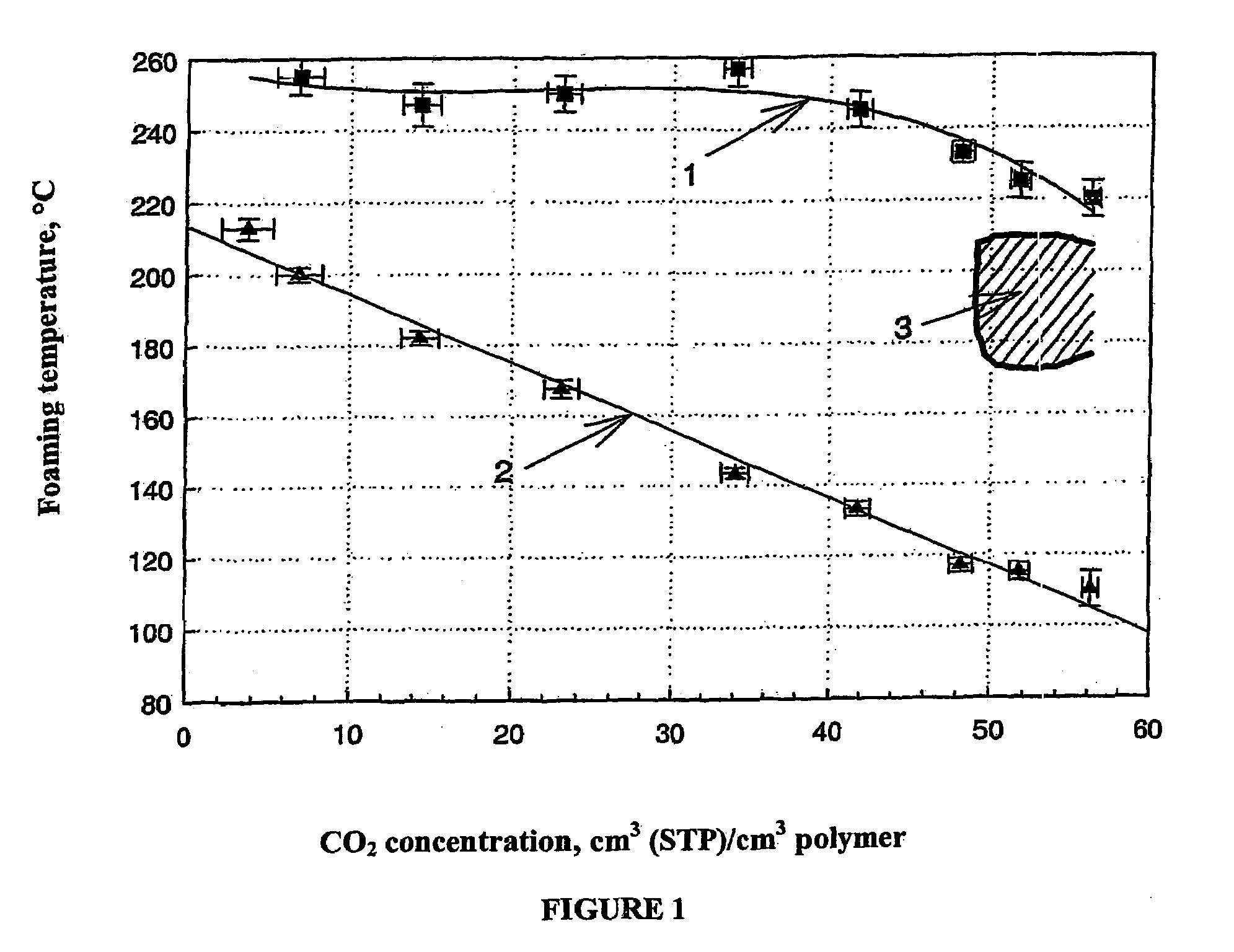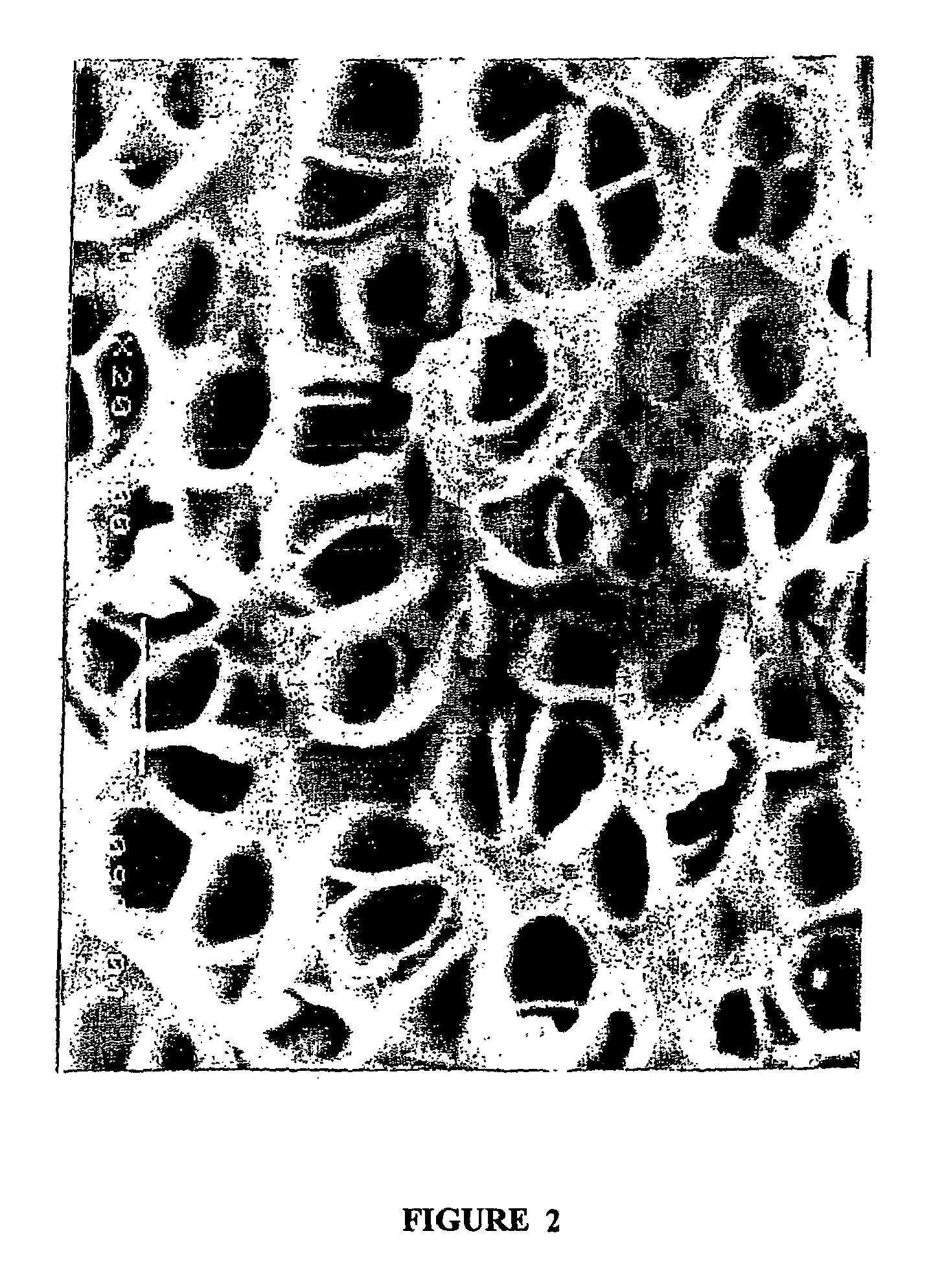Membrane and the use thereof
a technology of membranes and membranes, applied in the field of membranes, can solve the problems of insufficient separation and process suffering from the same disadvantages
- Summary
- Abstract
- Description
- Claims
- Application Information
AI Technical Summary
Benefits of technology
Problems solved by technology
Method used
Image
Examples
example 1
[0073]Foaming of a polyimide with structural formula:
[0074]
[0075]10 g of the polyimide Matrimid® 5218 (Manufacturer: Ciba Speciality Chemicals, Performance Polymers, Basel, Switzerland) was dissolved in 40 g of tetrahydrofuran (THF) and a 0.50 mm thick film was spread onto a glass plate. The film was dried in a stream of nitrogen (about 20° C.) and then at 30° C. or 150° C. in a vacuum drier until the solvent concentration (THF) was 2 gas pressure of 20 and 50 bars with a foaming temperature between 210° C. and 270° C. exhibited percolating, bicontinuous structures. Samples that had been saturated with a gas pressure of 10 bars of carbon dioxide exhibited no percolating structure. Above 320° C., for a foaming period of 30 s and a saturating pressure of 50 bars, no foamed morphology could be obtained. Percolation was demonstrated by means of flow measurements.
[0076]Foaming conditions:
[0077]
saturation pressure:5 MPasaturation gas:carbon dioxidesaturation period:2 hfoaming temperature:...
example 2
[0081]Foaming of a polyimide with structural formula:
[0082]
[0083]10 g of the polyimide P84® (Manufacturer: HP Polymer GmbH, Lenzing, Austria) was dissolved in 40 g of 1-methyl-2-pyrrolidone (NMP) and a 0.50 mm thick film was spread onto a glass plate. The film was dried in a stream of nitrogen (about 20° C.) and then at 30° C. or 150° C. in a vacuum drier until the solvent concentration (NMP) was <0.02% by weight. Portions of the film produced (thickness ≦100 μm) were saturated at 30, 40 and 50 bars and at ambient temperature (20° C. to 25° C.) with carbon dioxide in a pressure cell for 120 minutes. The carbon dioxide-saturated films were foamed at temperatures between 180° C. and 280° C. for 30 s. It was observed that foaming the carbon dioxide-saturated films at temperatures between 220° C. and 270° C. produced bicontinuous structures. Percolation was confirmed by means of capillary rise.
[0084]Foaming conditions:
[0085]
saturation pressure:5 MPasaturation gas:carbon dioxidesaturatio...
example 3
[0087]Foaming of a polyetherimide with structural formula:
[0088]
[0089]10 g of the polyetherimide Ultem® 1000 (Manufacturer: General Electric, Huntersville, N.C., USA) was dissolved in 40 g of chloroform and a 0.50 mm thick film was spread onto a glass plate. The film was dried in a stream of nitrogen (about 20° C.) and then at 30° C. or 150° C. in a vacuum drier until the solvent concentration (chloroform) was <0.02% by weight. Portions of the film produced (thickness ≦100 μm) were saturated at 50 bars and at ambient temperature (20° C. to 25° C.) with carbon dioxide in a pressure cell for 120 minutes. The carbon dioxide-saturated films were foamed at temperatures between 110° C. and 250° C. for 30 s. It was observed that foaming the carbon dioxide-saturated films at temperatures between 170° C. and 205° C. produced bicontinuous structures. Above 250° C., no foamed morphology could be obtained with a foaming period of 30 s and saturation pressures between 10 and 54 bars. Percolation...
PUM
| Property | Measurement | Unit |
|---|---|---|
| Fraction | aaaaa | aaaaa |
| Angle | aaaaa | aaaaa |
| Diameter | aaaaa | aaaaa |
Abstract
Description
Claims
Application Information
 Login to View More
Login to View More - R&D
- Intellectual Property
- Life Sciences
- Materials
- Tech Scout
- Unparalleled Data Quality
- Higher Quality Content
- 60% Fewer Hallucinations
Browse by: Latest US Patents, China's latest patents, Technical Efficacy Thesaurus, Application Domain, Technology Topic, Popular Technical Reports.
© 2025 PatSnap. All rights reserved.Legal|Privacy policy|Modern Slavery Act Transparency Statement|Sitemap|About US| Contact US: help@patsnap.com



